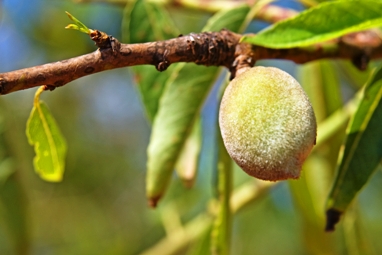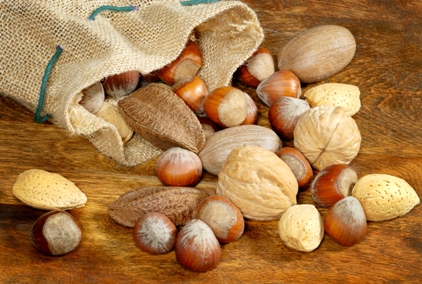Biologists do things differently – sometimes very differently – from most people. Case in point is that most of the “nuts” that we cook with are actually fruits. To a biologist, a nut is defined as a one-seeded fruit with a hard, ripened ovary wall (pericarp). Of the many culinary nuts used in Asian cooking, only hazelnuts and chestnuts are true nuts. Most everything else is some sort of fruit classified as a drupe.
Generally speaking, a drupe is a fruit that has a hard inner layer (endocarp) bearing one or more seeds. Common usage calls these “seeds” nuts – hence the confusion. Almonds, candlenuts, cashews, pine nuts, beechnut (buckwheat), pistachios and coconuts – all are drupes. To further complicate things some nuts – like the peanut are actually a type of vegetable called a legume. Lastly, modern systematic which uses genetic information to classify organisms as well as distinct phenotypic (physical) characteristics, has determined that walnuts and pecans may be a sort of intermediary between true nuts and drupes called tryma.
There are dry drupes – of which the coconut is the classic example, and fleshy drupes which are more frequently associated with true “fruits” such as the peach, but is also used to correctly label almonds, another member of the rose family. The sumac family consists of mangoes on the fruit side of the house and pistachos on the “nut” side of the house.

Highly nutritious and abundant in nature, nuts have been incorporated into Asian cuisines for their flavors, their health benefits and for the textural changes that they bring to dishes. Finely ground, nuts become an important base or thickener of sauces and curries. Whether a Georgian Garlic and Walnut Sauce, its Afghan cousin Cilantro Sauce – or a Chinese influenced Spicy Peanut Sauce, the use of nuts as a major flavor in sauces and curries is pan-Asian.
When used in layered pilafs, nuts can play a central or supporting role and in a moderate grind, nuts offer a bit of crunch and an earthy, savory flavor when added to baked pastries and puddings.
Used whole or roughly chopped as in the western Asian candied Churchkela and Bastegh desserts, nuts help balance the sweetness of the honey or dried juice that encase them. By the handful, as used in Southern Chinese, Vietnamese or Indo pacific cuisines, nuts offer a blast of hard texture and strong flavor to complement stir fried meats and vegetables.
Chestnuts, although widely available, seem to be particularly favored in Northern Asia – from the Black Sea to the Koreas – with them most frequently being added to stews and soups – or chopped and used in desserts.
Another northern-favored nut is the beech nut which when dried and ground becomes the basis for buckwheat flour used to make noodles, bread, dumplings and pancakes.
Nut oils are very important to world cuisines from peanut oil to the more delicate walnut oil, candlenut oil to coconut oil to palm oil – it would be difficult to cook authentic Asian food without these products.
Although nuts are now cultivated far from their centers of origin, Western and Central Asia are once again the home of many old world nut species from the common walnut, almond, pistachio to the beech nut – all are thought to have originally incorporated into foods in Asia. Cashews are a New World import to Asia, having originated in Brazil. Although it is impossible to determine where exactly candlenuts come from, the extensive incorporation into Southeast Asian and Indo-Pacific cuisines suggests this area as a point of origin.
As an important food for many species of animals, culinary use of nuts is indeed older than human civilization itself and likely formed an important part of the diets of our hominid ancestors. Whether true nut or drupe, nuts have been nourishing generations of humans across the millenia. Think on that as you lace into the holiday peanut brittle – if you dare. (Words by Laura Kelley; photo of Mixed Nuts © Bronwyn8 | Dreamstime.com; photo of Unripe Almond © Tempic | Dreamstime.com)

